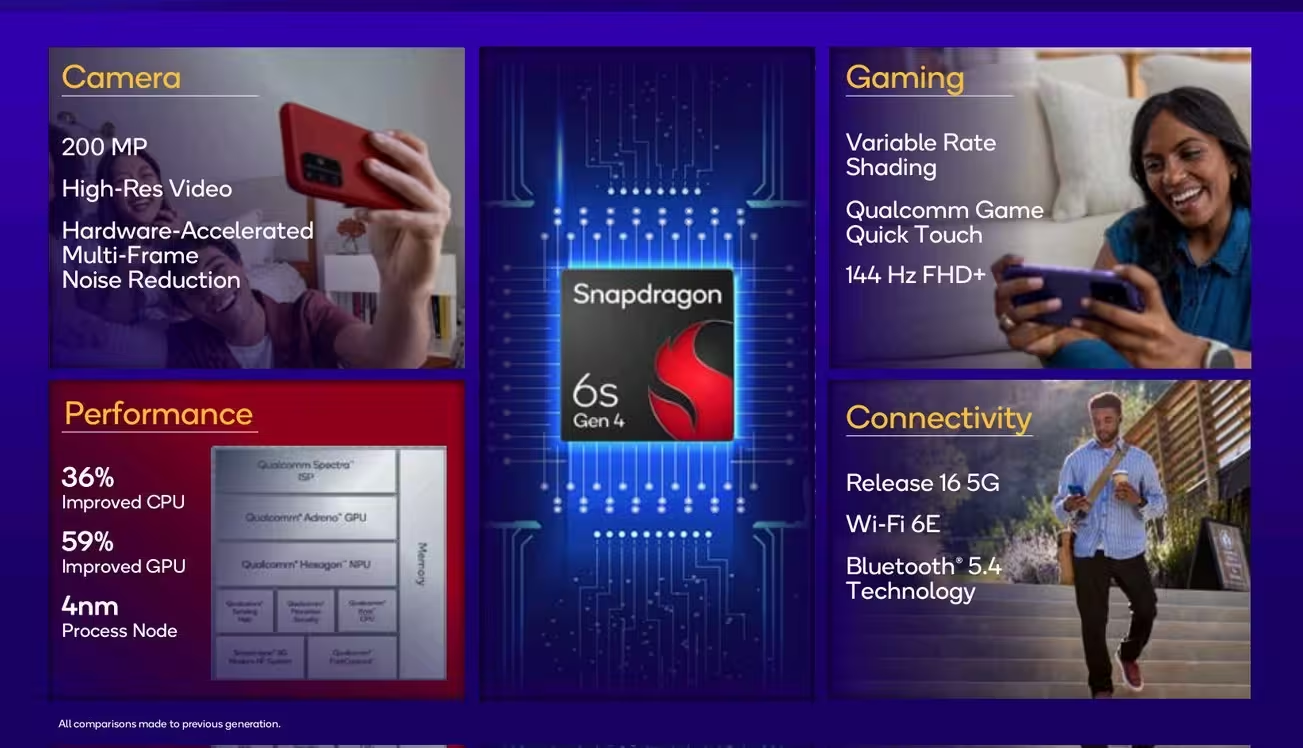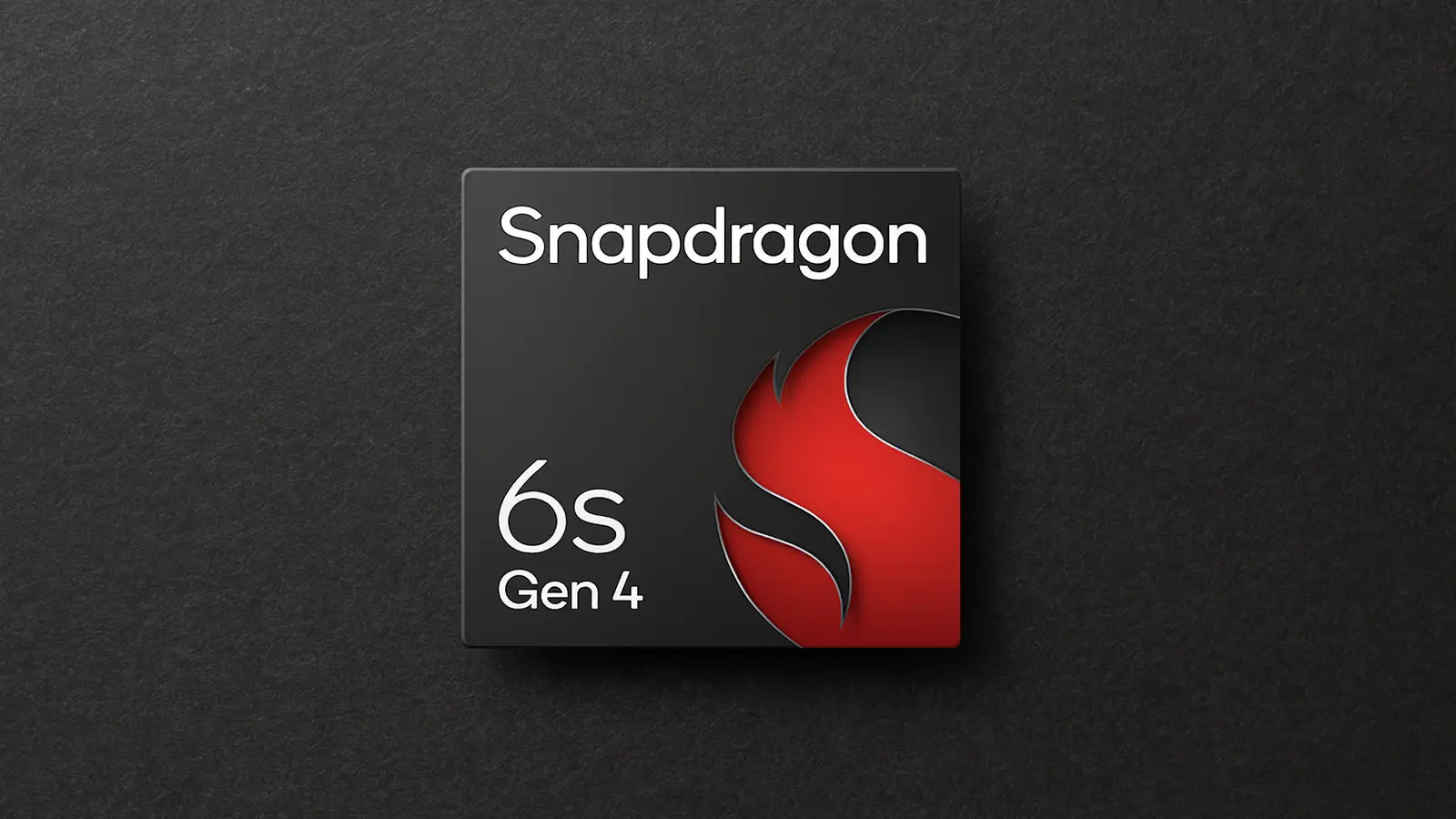3 Minutes
Qualcomm quietly introduced the Snapdragon 6s Gen 4, a mobile platform that brings high-end silicon tricks to budget Android phones. The new chip promises faster CPU and GPU performance, stronger connectivity, and improved camera handling — all built on a surprisingly efficient 4nm node.
Why the 4nm jump matters for affordable phones
Moving the 6-series to a 4nm fabrication process is a notable shift. That kind of node usually appears in flagship processors, and here it translates to better power efficiency and higher sustained performance. Qualcomm claims up to 36 percent higher CPU performance and 59 percent faster GPU processing versus previous 6nm-based models. In plain terms: smoother multitasking, quicker app launches, and more responsive gaming on phones that won’t break the bank.
What’s inside the 6s Gen 4
The chipset uses eight Kryo cores arranged for balance and efficiency — four performance cores clocked up to 2.4GHz and four efficiency cores at 1.8GHz. Display support includes Full HD+ panels at refresh rates up to 144Hz, and the platform carries Snapdragon Elite Gaming features such as Variable Rate Shading and Game Quick Touch to reduce input lag and improve frame rendering.
- CPU uplift: up to 36 percent
- GPU uplift: up to 59 percent
- Core layout: 4x performance (2.4GHz) + 4x efficiency (1.8GHz)
- Display: FHD+ up to 144Hz
- Gaming: Variable Rate Shading, Game Quick Touch

Camera, video and connectivity — flagship-grade features
Imaging is a key area of improvement. The 6s Gen 4 can support sensors up to 200 megapixels and record 2K video, while Qualcomm’s hardware-level Multi-Frame Noise Reduction helps deliver clearer shots in low light. On the connectivity side, the platform supports 5G Release 16, Wi-Fi 6E with theoretical speeds up to 2.9 Gbps, and Bluetooth 5.4 — features that bring midrange devices closer to flagship capabilities.
How this changes the midrange market
By packing a 4nm design and advanced multimedia and networking tech into a mid-tier chip, Qualcomm is narrowing the gap between affordable phones and pricier models. Expect better battery life under load, faster gaming performance at higher refresh rates, and stronger camera results in challenging lighting. For consumers, that means real-world improvements without a flagship price tag.
Qualcomm hasn’t named launch partners yet, but industry observers expect brands such as Xiaomi, Oppo, and Motorola to adopt the platform in upcoming models. If those predictions hold, shoppers will likely see a new wave of competitively priced phones that punch above their class.
Source: gizmochina


Leave a Comment